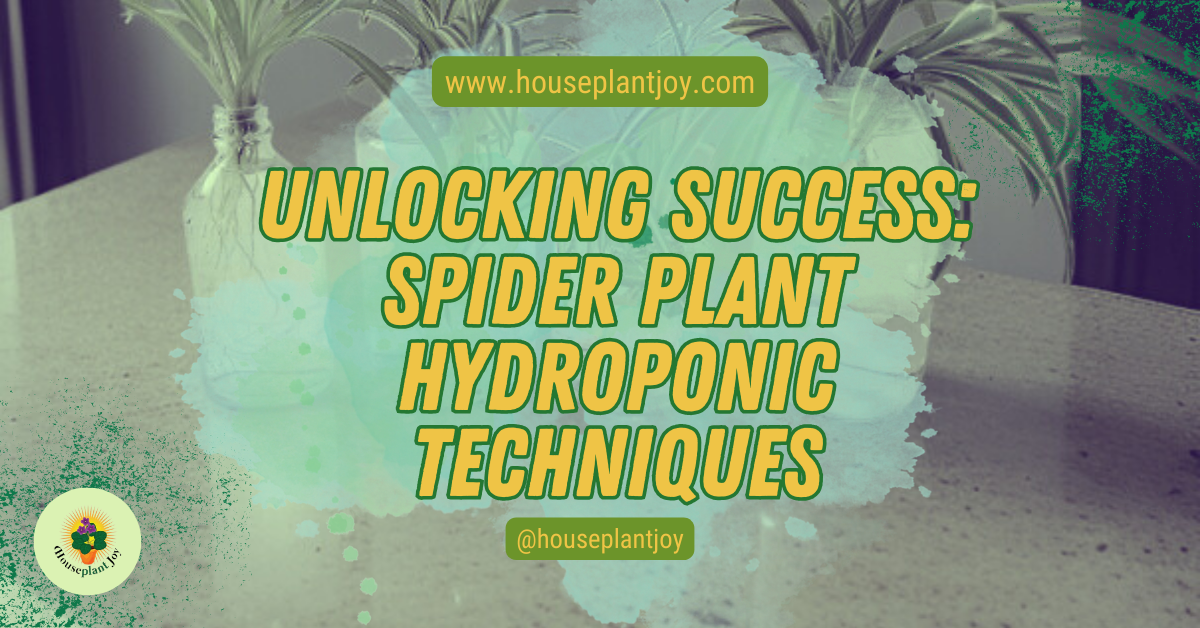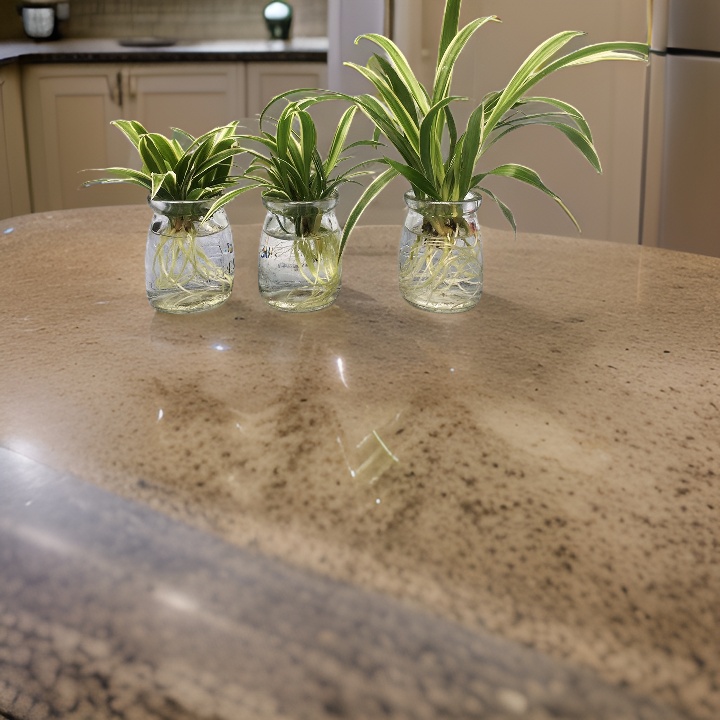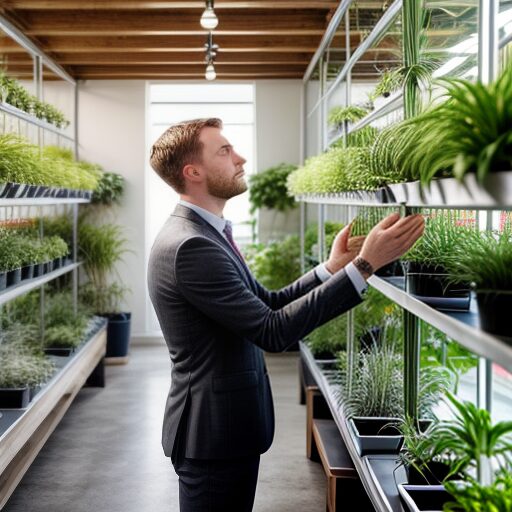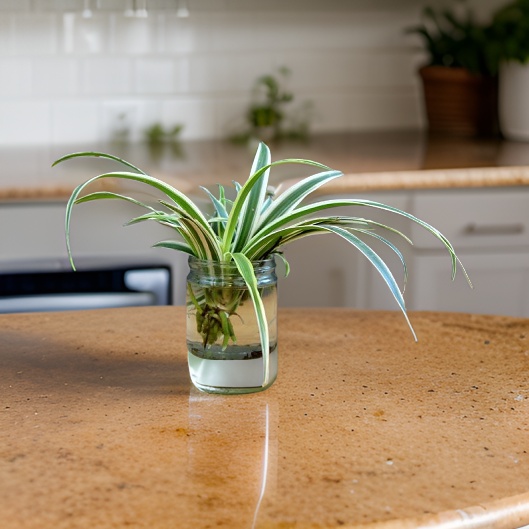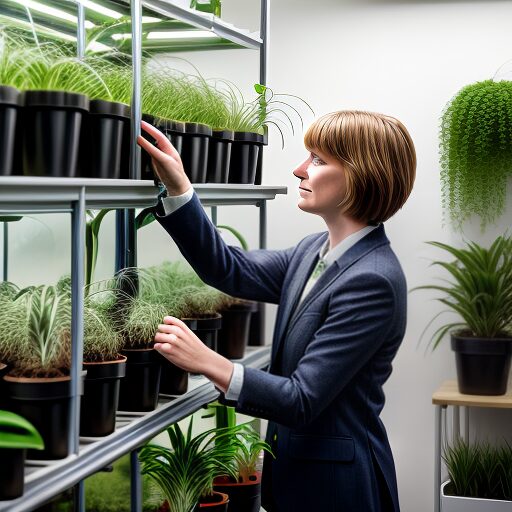HousePlantJoy is supported by our audience. When you purchase through one of our links, we may earn a small affiliate commission. As an Amazon Associate I earn from qualifying purchases. Your cost is not affected.
==================
Embarking on the journey of hydroponic gardening with spider plants holds immense promise, but without the right techniques, the path to success can be fraught with challenges. Are you struggling to unlock the full potential of your spider plant hydroponics? Frustrated with inconsistent growth, nutrient deficiencies, or the complexities of hydroponic systems?
In this article, we delve into the pain points that many enthusiasts encounter on their hydroponic journey. Join us as we address these challenges head-on, offering insights, solutions, and a roadmap to turn your hydroponic aspirations into a thriving reality. Say goodbye to setbacks and hello to a flourishing spider plant hydroponic garden!
Understanding Hydroponic Growth of Spider Plants
Hydroponic growth involves growing plants without soil, where the roots of the plants are submerged in nutrient-rich water. This method of cultivation is gaining popularity among indoor gardeners, as it offers numerous advantages. Typically, I see better growth, more precise regulation of water and nutrient levels, and reduced risk of soil-related issues like root rot. When it comes to hydroponic spider plant cultivation, understanding the plant’s root system, water level, and light requirements helps ensure successful growth in an indoor garden setting.
I love spider plants and hydroponics. Using super easy or simple spider plant hydroponic techniques lets me blend my love of these into an easy way to grow even more of these graceful plants with less worry of having to water frequently. Spider plants, scientifically known as Chlorophytum comosum, are popular indoor plants known for their long, arching stems and green foliage. These resilient plants not only add and fill beauty to any space. They also offer a range of health benefits, including air purification and stress reduction.
Significance of Hydroponics for Spider Plants
Hydroponic spider plant cultivation holds great significance due to the growth potential it offers. Spider plants thrive when their roots receive optimal water, light, and nutrient levels, which can be better regulated in hydroponic systems.
Spider plants have sensitive roots, and soil-based cultivation may often result in root rot or imbalances in water level, hindering their growth. Using hydroponics, indoor gardeners help provide spider plants with the ideal growing conditions. This usually results in healthier foliage, increased growth potential, and a reduction in maintenance compared to traditional soil-based methods.
An added benefit? No soil!
How Hydroponics Works for Spider Plants?
Hydroponic spider plant cultivation involves rooting spider plant cuttings in water, demineralized water or regular tap water, rainwater, or distilled water, non chlorinated water, depending on preference. Monitoring the water level, chlorophytum comosum’s root system, and light exposure is crucial for successful hydroponic growth.
Spider plant cuttings rooted in water allow for direct nutrient absorption, supporting sensitive new roots and promoting healthy growth. These plants thrive with indirect light, avoiding long exposure to direct sun or harsh light.
For best health, add hydroponic spider plant fertilizer to the water, to provide essential nutrients for foliage prosperity. I do this about once a month.
Preparing Spider Plants for Hydroponic Cultivation
Prepare the plants for the new environment before beginning hydroponic spider plant cultivation. Spider plants are known for their adaptability.
One of the easiest ways is to begin by rooting the cuttings in water or soil. When using tap water, it is recommended to let it sit for 24 hours to allow chlorine to evaporate. We have unchlorinated tap water, so no worries.
Fun Fact: if you have a fish aquarium in your home, just use a cup of water from your tank!
Aquarium water usually contains safe water and nutrients. In fact, this is the basis for aquaponics!
Choosing the Right Spider Plant Cutting
One of the first steps in preparing spider plants for hydroponic growth is selecting the right spider plant cutting. When choosing cuttings, look for plants with long stems and greenery, indicating their growth potential. Then carefully use sharp scissors when cutting your chosen parent plant.
I select cuttings that have parent plantlets and stolons, as these are essential for the propagation process. Ensure the cuttings are healthy, with sturdy roots and minimal signs of rot. By choosing well-developed spider plant cuttings, you set the foundation for a successful growing season.
Preparing the Plant for Hydroponic Growth
Water propagation of spider plant cuttings proves quite helpful when preparing spider plants for hydroponic growth. Here are some steps to follow:
- Place spider plant cuttings in a glass of water. You must let your tap water sit for 24 hours, or distilled water.
- Position the glass of water in indirect light, avoiding direct sunlight exposure.
- Trim any yellowing foliage from the cuttings using sharp scissors.
- Use skewers or pebbles to ensure the cuttings remain upright and stable in the water.
- Monitor the water level, ensuring the roots of the cuttings remain submerged.
- By following these steps, you set the stage for successful hydroponic spider plant growth, providing the plants feed with the necessary water, light, and stability.
Setting Up Your Hydroponic System for Spider Plants
Once you have prepared your spider plants for hydroponic growth, it is time to set up your hydroponic system. This system will provide the plants with a controlled environment, ensuring optimal growth conditions.
Key factors to consider when setting up your hydroponic system for spider plants include indoor garden space, water level regulation, and accommodating the unique root system of chlorophytum comosum. With a well-designed hydroponic setup, you can enjoy the benefits of hydroponic spider plant cultivation year-round in your indoor garden.
Selecting the Ideal Hydroponic Setup
Selecting the ideal hydroponic setup is crucial for successful spider plant cultivation. Consider the following when choosing your hydroponic system:
- Ensure the system provides adequate space for the spider plant to grow roots and thrive.
- Choose a system that allows you to easily regulate and control water levels, preventing root rot and imbalances.
- Consider the size of your indoor garden and select a hydroponic system that fits well within your space.
- Look for a system that promotes good water circulation, providing oxygen to the roots and preventing stagnation.
- Prioritize systems with built-in features to prevent algae growth and maintain water cleanliness.
- With the right hydroponic setup, you can create an ideal environment for spider plants to flourish and thrive.
The Importance of a Suitable Container
Choosing the perfect container for your hydroponic spider plants is essential for their overall growth and well-being. Consider the following factors when selecting a container:
- The container should provide ample space for the spider plant’s roots to spread and develop properly.
- Ensure the container has the capacity to hold the appropriate water level needed for hydroponic growth.
- Look for containers with drainage holes or proper water level indicators to prevent overwatering or root rot.
- Consider the material of the container, such as glass vases or food-grade plastic, ensuring it is safe for hydroponic use.
- Select a container that accommodates the growth potential of spider plants and provides stability for optimal growth of the spider plant in water.
- By carefully selecting a suitable container, you provide the necessary support and environment for successful hydroponic spider plant growth.
Choosing the Perfect Hydroponic Medium
Choosing the perfect hydroponic medium is essential for providing a stable growing environment for spider plants. Consider the following when selecting a hydroponic medium:
- Opt for a growing medium that can support the roots of spider plants without soil, such as good planting soil or other suitable options.
- Ensure the growing medium provides adequate water retention and drainage, promoting healthy root growth.
- Consider the pH level of the growing medium, as spider plants prefer slightly acidic conditions.
- Look for growing mediums that are free from pathogens, pests, and diseases, reducing the risk of plant health issues.
- Select a hydroponic medium that allows for easy maintenance, cleaning, and replacement when necessary.
- By choosing the right hydroponic medium, you provide optimal conditions for root development and growth, leading to flourishing spider plants.
Nurturing Your Hydroponic Spider Plant
With your hydroponic system set up and the spider plants prepared, it’s time to nurture your plants for optimal growth. By focusing on the spider plant’s root system, water level, and overall care, you can ensure their prosperity in a hydroponic environment.
Craft a nutrient-rich water solution, position and acclimate your plant, and monitor water quality and maintenance according to the unique needs of hydroponic spider plants. By following these nurturing techniques, you’ll enjoy lush, vibrant new spider plants that thrive in a hydroponic system.
Crafting the Nutrient-Rich Water Solution
Creating a nutrient-rich water solution is vital for hydroponic spider plant growth and prosperity. Here are some steps to follow when crafting the water solution:
- Add a hydroponic spider plant fertilizer to the water, ensuring the plants receive essential nutrients.
- Consider using rainwater, as it is generally free from chlorine and other additives that may affect plant growth.
- If using tap water, let it sit for 24 hours to allow chlorine to evaporate before adding it to the hydroponic system.
- Carefully measure and mix the fertilizer into the water solution, following the manufacturer’s instructions.
- Monitor the water solution regularly, ensuring the baby plants receive a balanced mix of nutrients to support their growth.
- By providing a nutrient-rich water solution, you foster the prosperity of hydroponic spider plants, enabling them to thrive in their indoor garden habitat.
Positioning and Acclimating Your Plant
Positioning and acclimating your hydroponic spider plant is essential for its growth and overall health. Consider the following tips:
- Place your spider plant in a location that receives indirect light, as direct sun exposure can damage the foliage.
- Gradually acclimate your spider plant to new plantlet growth or water conditions, avoiding sudden changes that may cause stress.
- Ensure the water level in the hydroponic system remains below the roots, preventing yellowing or root rot.
- Regularly inspect the roots for stolon growth, ensuring the plants are acclimating well to their hydroponic environment.
- Utilize hydroponic spider plant propagation as a means to create new plants, contributing to the overall prosperity of your indoor garden.
- By positioning and acclimating your hydroponic spider plant properly, you create an optimal environment for growth, resulting in healthier and more vibrant plants.
Monitoring Water Quality and Maintaining Your Plant
Monitoring the plant water quality in your hydroponic spider plant setup is crucial for sustained growth. Look out for any algae formation in the glass of water, as it may signal underlying issues. Regularly replacing the water, while ensuring it’s at room temperature, prevents shocking the little plant. Maintain the water level below the roots to avoid yellowing or root rot. Keep an eye on the developed roots for any signs of stolon growth and choose stable vases that allow for growth.
The Pros and Cons of Spider Plant Hydroponic Growth
Pros and Cons of Spider Plant Hydroponic Growth: When considering the advantages, spider plants thrive in a hydroponic system due to efficient water usage and faster growth. Additionally, they are less susceptible to soil-borne diseases. On the flip side, some challenges include the need for regular monitoring of the nutrient solution and potential issues with root rot. Understanding these pros and cons will help you make an informed decision before embarking on hydroponic cultivation.
Advantages of Hydroponic Spider Plant Cultivation
Spider plants grown hydroponically offer an excellent choice for indoor gardeners with delicate roots, providing greenery without the maintenance of soil. Hydroponic spider plant propagation allows for new plant growth in water, enhancing prosperity with new plantlets. The method encourages new plants to take root in water, making it a convenient and visually appealing option for plant enthusiasts.
Challenges in Hydroponic Spider Plant Cultivation
Hydroponic spider plant cultivation presents challenges rooted in the sensitivity of the plants, requiring diligent monitoring and proper maintenance. Prevention of root rot and yellowing is crucial, as hydroponic spider plants are particularly sensitive to these issues.
The process of propagation itself can be challenging due to the delicate nature of the roots. Careful monitoring and maintenance are essential to ensure the success of spider plant hydroponic growth, especially for those rooted in water.
The hydroponic method also encourages new plantlet growth, enhancing the overall prosperity of your spider plants. Rooting spider plants in water provides stability and makes them easier to care for indoors.
Video Credits: @aapkagarden484
Conclusion
In conclusion, hydroponic techniques offer a unique and efficient way to grow spider plants. By eliminating the need for soil, you create an optimal environment for your plants to thrive. The benefits of hydroponic gardening for spider plants include faster growth, higher yields, and better control over nutrient intake.
However, it is important to note that there may be challenges involved, such as the initial setup and monitoring water quality. With the right knowledge and equipment, hydroponic spider plant cultivation can be a rewarding and successful endeavor. So, if you’re looking to unlock the full potential of your spider plants, consider giving hydroponics a try!
Frequently Asked Questions
What Makes Spider Plants Suitable for Hydroponic Systems?
Spider plants are well-suited for hydroponics due to their adaptability to soilless environments. Their hardiness, ability to thrive in nutrient-rich solutions, and efficient nutrient uptake make them ideal candidates for hydroponic cultivation.
What Are the Benefits of Using Hydroponic Techniques for Growing Spider Plants?
Using hydroponic techniques for growing spider plants offers several benefits. These techniques allow precise control over nutrient levels, resulting in healthier and more vibrant plants. Additionally, hydroponics enables year-round cultivation regardless of weather conditions. It requires less space compared to traditional soil-based methods and reduces the risk of pests and diseases.
What Equipment Do I Need to Get Started With Hydroponic Gardening?
To get started with hydroponic gardening, you’ll need some basic equipment. This includes a container, growing medium, nutrient solution, and pH testing kit. Depending on the system you choose, you may also require pumps, timers, and grow lights. Research different systems to determine the best fit for your needs.
Are There Any Potential Challenges or Drawbacks to Using Hydroponic Techniques for Growing Spider Plants?
Using hydroponic techniques for growing spider plants may come with its challenges. Inexperienced growers might struggle with maintaining the right nutrient balance, and the initial investment in equipment and resources can be significant. Additionally, visually, hydroponically grown spider plants may not have the same appeal as those grown in soil. Proper monitoring is also crucial to prevent pests and disease.
How Often Should I Water and Fertilize Spider Plants in a Hydroponic System?
The watering frequency in hydroponic systems depends on the specific system used, but generally, spider plants benefit from consistent moisture. Regularly check the nutrient solution levels, and adjust as needed. Fertilization should follow the recommended guidelines for the chosen nutrient solution, considering the plant’s growth stage. It’s crucial to monitor pH levels to ensure optimal nutrient uptake.
Never Miss a Beat: Follow Our Social Media Channels for Real-Time Updates
Connect with us on social media to unlock a world of exclusive content, behind-the-scenes glimpses, and real-time updates. Be the first to know about exciting giveaways, promotions, and insider tips that will enrich your experience with us.
Together, let’s create memorable moments and build lasting connections. Don’t miss out – follow us now for a daily dose of inspiration and a front-row seat to all things.

